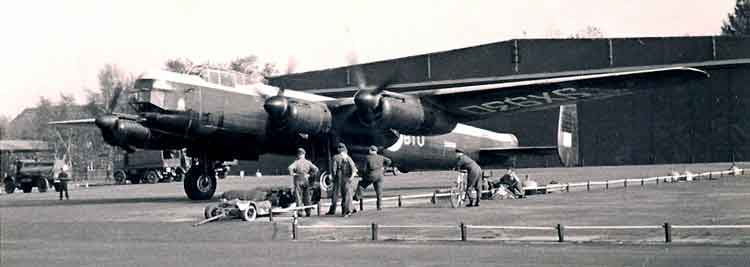
|
||
|
Avro Lincoln visiting Fassberg - about 54. (Thanks to Mike Wraight.) Avro Lincoln Designed to specification B.14/43 to meet a requirement for a Lancaster replacement, the prototype Avro Lincoln flew for the first time on 9 June 1944. Deliveries to the RAF began in the Spring of 1945. The Lincoln became operational too late to see active service in World War II, although plans had been made to send several squadrons to the Far East as part of "Tiger Force" for operations against Japan. Lincolns did, however, see action against communist terrorists during the Malaysian Emergency of the 1950s. The RAAF operated the type as the Lincoln B.30; five aircraft were assembled from British-built components and a further 68 built under licence. The Lincoln was retired from RAF Bomber Command at the end of 1955, being replaced by the Canberra jet bomber. The last air arm to operate the type as a bomber was the Argentine Air Force, which received 12 Lincoln B.1s and used them until 1963. Specification: Type: Heavy bomber (data Lincoln B.1); Crew: 7; Powerplant: four Rolls-Ryce Merlin 85 V-12 in-line engines; Max speed: 513 kph (319 mph) at 5,640 mtrs ( 18,500 ft); Service ceiling: 9,300 mtrs (30,500 ft); Max range: 2,365 km (1,470 miles); Wing span: 36.57 mtrs (120 ft); Length: 23.85 mtrs (78ft 3in); Height: 5.25 mtrs (17ft 3in); Weight: 34,020 kg ( 75,000 lb) loaded; Armament: twin 12.7mm (0.50 in) remotely controlled Browning machine guns in nose turret and two in tail turret ; twin 20mm (0.79in) Hispano Mk. 4/5 cannon in dorsal turret (later deleted). (Thanks to Robert Jackson's Encyclopedia of Military Aircraft produced by Paragon Books.) |
||